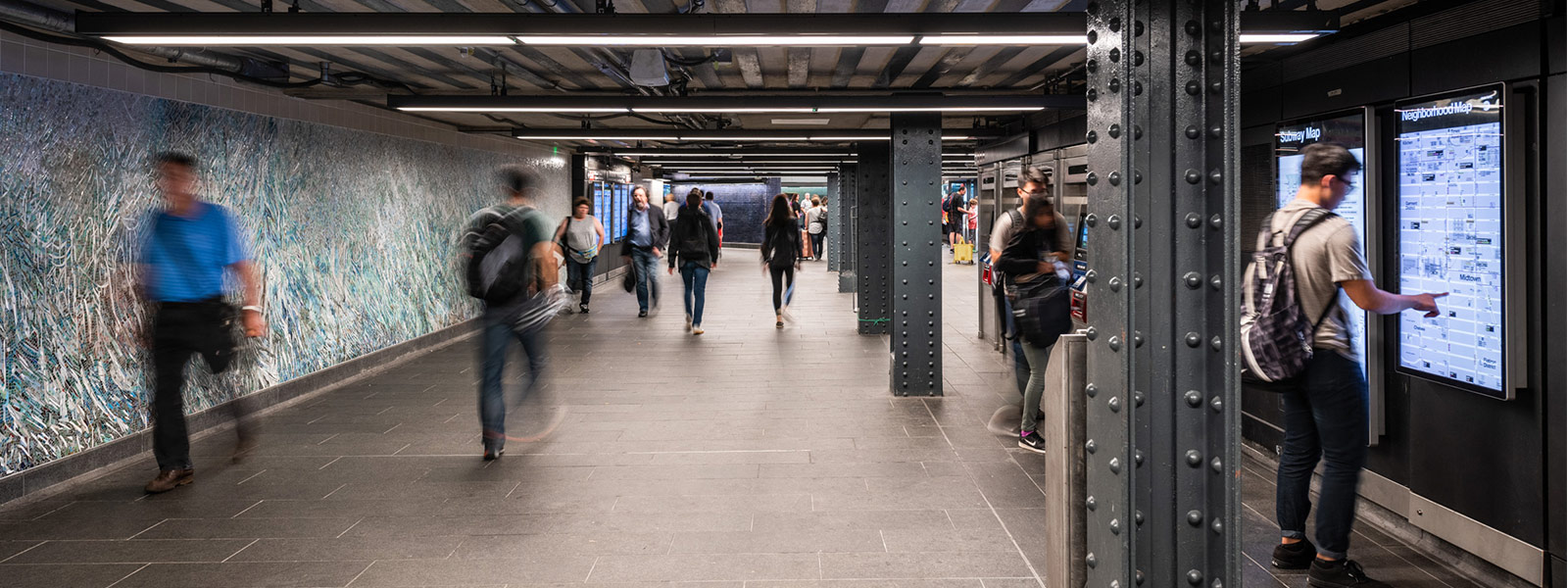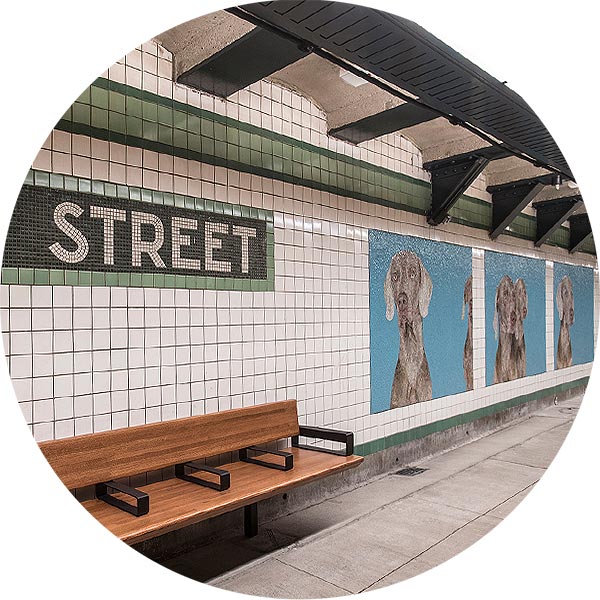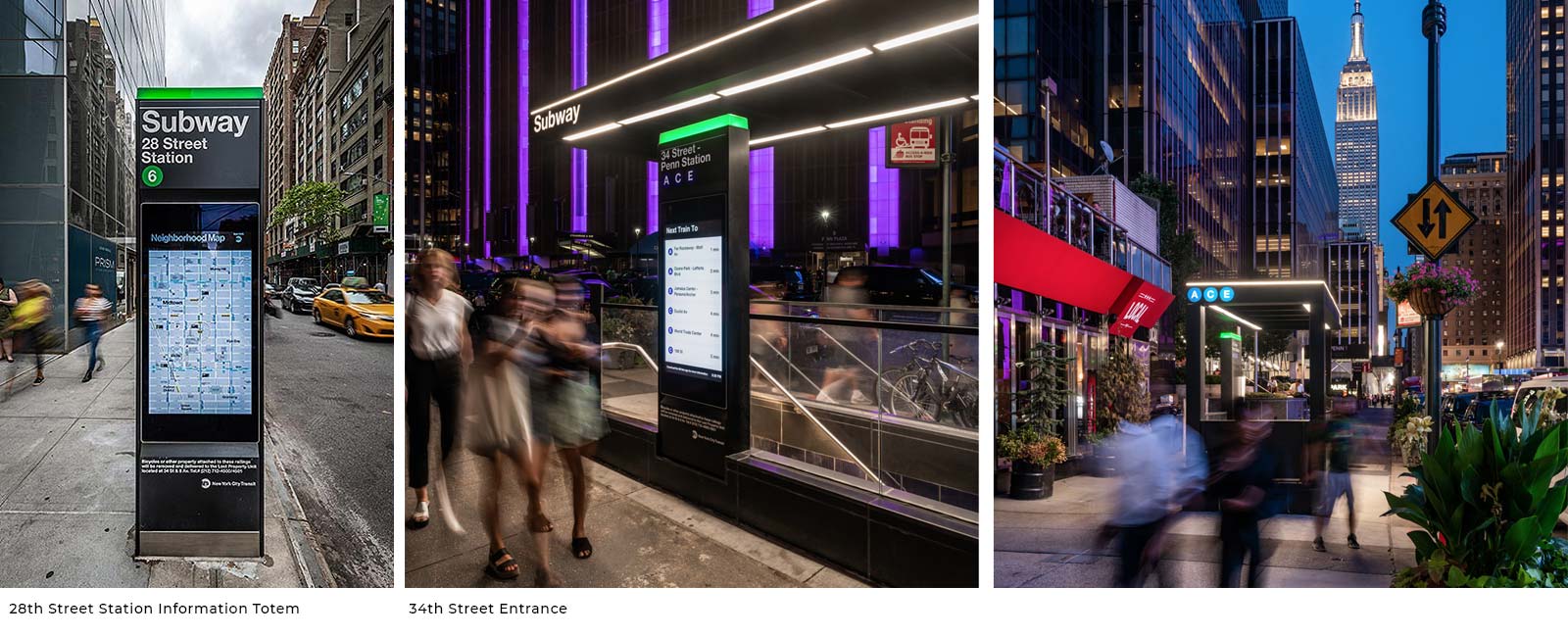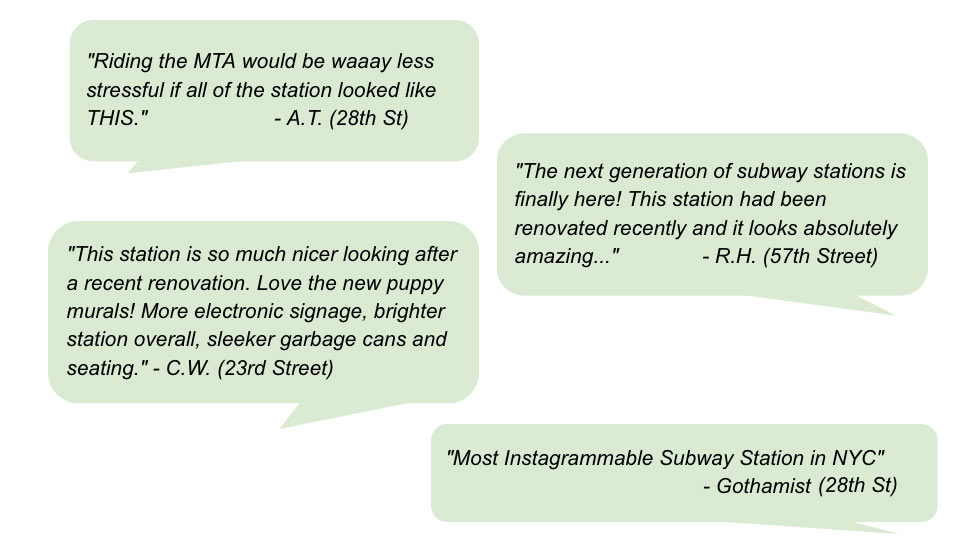ESI Program consisted smaller "packages" which rolled-out in staggered schedules. Each package went through a rigorous design, review and implementation process to ensure the consistency in aesthetic quality and functionality. The changes were integrated into following packages and each station's project schedule.
With over 1.7 billion riders per year, the NYC subway passengers are diverse in their age, physical ability and familiarity with the subway. It is crucial to understand and accommodate these users' needs – their cultural diversity, and journey patterns to guide through the design process. It is also important not to overlook the needs of the employees and maintenance crews who spend a longer period of time underground.
User experience for subway riders begins prior to arriving at the station.
Clear wayfinding aids smooth transition through the intermodal transportation.
Having physical displays with the most up-to-date information is still needed to accommodate customers of diverse digital literacy in public spaces.
It is imperative to strategically locate these devices at the decision-making points that would not impede the user flow across the three different user experience
zones: threshold, control area, platform.

Our design ethos is to AMPLIFY the existing aesthetic and historical value is the central goal of this series of renovation projects. The additions need to CLARIFY the critical information by decluttering the space. The design needs to BALANCE between preservation and modernization in order to maintain the system-wide identity. Unique art installations and user centered design experience shall provide passengers a journey with a DELIGHT.

In addition to traditional CAD drawings, the team scanned the site to collect the data using a point cloud scanner. Using that data, 3D models were created to understand the design challenge, and to improve the usability of principal elements in the space.





The project was received positively by the users in general, and the average review of these stations are rated higher than before. Some criticisms were drawn to the project scope of work, which did not include accessibility strategies such as installations of elevators: however, such major overhauls are currently underway in the separate capital projects across the system. There were other ongoing issues such as vandalism of art and equipment, but the brightness and newly installed security cameras keep these stations safe and less vulnerable.
The most challenging part of the project for me was to keep track of construction progress while the team
was simultaneously working on the design on the drawing board. It was pleasant to work with the client and their design
team who really cared about improving the design. At the end it was most rewarding to hear about positive reviews by the customers and how excited they are about using the new facilities.
I've learned so much about transportation systems and the design process in depth. It would be interesting to apply that knowledge into
other types of user experience design!